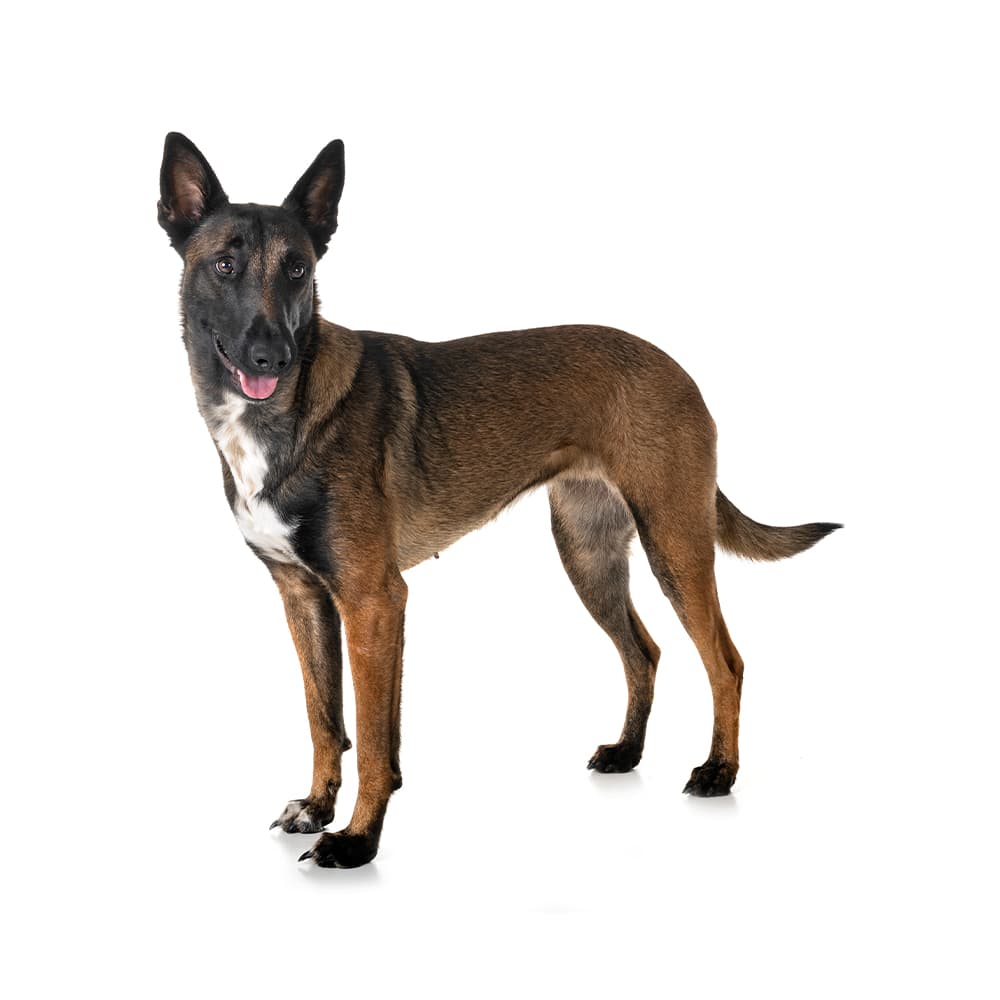Basepaws analyzes this breed as part of a group of other breeds.


Basepaws analyzes this breed as part of a group of other breeds.


Basepaws analyzes this breed as part of a group that also includes Belgian Laekenois, Belgian Malinois, Belgian Tervuren.
Despite being distinct in characteristics and origin, some pairs or groups of breeds lack the number of genetic differences required to distinguish these populations from one another, particularly when only a subset of these differences are inherited by a mixed breed dog. As we continue to expand our breed database, we aim to increase the resolution of our ancestry algorithm such that differentiating between increasingly specific ancestral sources becomes possible.

The Belgian Malinois is one of four Belgian sheepdogs that originated in Belgium in the late 19th century. These dogs, which also include the Belgian Tervuren, Belgian Groenendael, and Belgian Laekenois, were primarily used for herding and protecting livestock. Belgian Malinois were first recognized as a distinct breed by the Club du Chien de Berger Belge in 1891, thanks to the efforts of a Belgian breeder named Adrien Janssens. The Malinois part of the breed name comes from the Belgian city of Malines.
The Belgian Malinois can be affected by cardiomyopathy (dilated), cataracts, cerebellar ataxia (spongy degeneration), ectodermal dysplasia (x-linked), elbow dysplasia, elbow dysplasia (fragmented coronoid process), epilepsy, exertional myositis, gastric dilation/volvulus, hip dysplasia, hypothyroidism, leukodystrophy (spongiform encephalopathy), Lumbosacral stenosis, mucopolysaccharidosis VII, pannus, patellar luxation, persistent pupillary membranes, prognathism, progressive retinal atrophy, retinal dysplasia, spinocerebellar ataxia (myokymia and neuromyotonia). Genetic testing is recommended, including for the following additional conditions: hyperuricosuria, degenerative myelopathy, and progressive rod-cone degeneration.
Belgian Malinois are known for their intelligence, trainability, and high energy levels. They are also protective and have a strong work ethic. This combination of traits makes them excellent working dogs, but it also means they require an owner who can provide them with a lot of mental and physical stimulation. Without sufficient exercise and mental challenges, Belgian Malinois can become bored and may exhibit destructive behaviors.
Though every dog is an individual, the breed is known to be rather aloof with strangers, yet generally loyal and affectionate with its family (including children). However, due to their high energy and intense focus, Belgian Malinois may be too intense for families with very young children, first time dog owners, or people who are not accustomed to active dogs.
A canine genetic lineage is a group of individuals or entire breeds that descended from common ancestors predating modern breed formation. Often these lineages are associated with a ‘type’ of dog with a unique historical working role and associated behaviors (e.g., herding, scent hunting, etc.).
Herding dogs are known for their high intelligence, trainability, and strong work ethic. These breeds originated in areas where managing livestock was an important part of daily life and had large pastoral lands. These breeds were specifically developed to help farmers and shepherds move, manage, and protect herds of livestock. Breeds within the herding dog lineage are agile and are known to have a natural herding instinct, where they like to keep their animals together. They are loyal and attentive to their handlers and are eager to please and are also highly aware of their environment. Many breeds within this linage have gone on to work as rescue and police dogs.
Example breeds with ancestry from this lineage include Border Collie, Cardigan Welsh Corgi, and German Shepherd.
The Belgian Malinois was brought to the United States in the early 20th century, and was recognized by the American Kennel Club (AKC) in 1959.
Today, this breed is well-regarded for its intelligence and versatility and is often used in various roles such as police and military work, search and rescue, and service dogs for the disabled.
https://www.akc.org/dog-breeds/belgian-malinois/
https://www.akc.org/dog-breeds/belgian-sheepdog/
https://www.petmd.com/dog/breeds/c_dg_belgian_malinois
http://www.malinoisclub.com/abmc/about-malinois/history/
Recommended by top vets with decades of experience
21 breeds
64 genetic health markers
50 genetic trait markers
